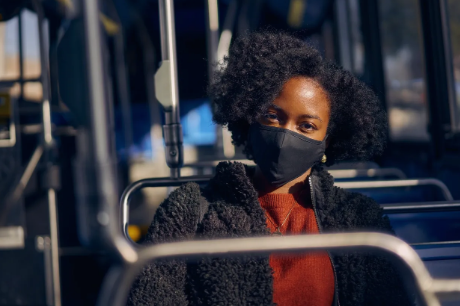Written by Sharon Wagner
The COVID-19 pandemic brought forth numerous challenges in all sectors of life from healthcare, work, leisure, education, fitness, and more. While these challenges led to a series of hardships for many, over time we’ve learned to adapt and create a new lifestyle allowing us to regain a sense of normalcy while keeping us and those around us safe. Today, Counseling Connect explores common scenarios faced by people due to COVID-19 and the lessons that were learned from them.
Managing Job Layoffs
Stories of job layoffs dominated the headlines for months after the start of the pandemic. According to research by AARP, the worst affected industries were hospitality, tourism, construction, entertainment, and manufacturing.
The loss of traditional full/part-time jobs led to workers seeking new opportunities, mainly in the freelancing sector. According to current predictions, the number of freelancers in the US stands around 59 million. While workers may have started freelancing based on need, in the past two years, they’ve realized the advantages it provides over traditional roles, which include:
● Flexible work schedule
● Remote working
● Cost savings due to no commute
● Ability to set pay rate
● Higher earning potential
Many current successful freelancers would have never pursued this path if not for the pandemic. Some have even taken their work to the next level by forming their own company. Additionally, with plenty of job openings, it’s a good time for job seekers to get started with a stand-out resume that highlights their professional skills and experience.
Starting a Fitness Routine
While remote working provided individuals the numerous advantages mentioned above, as the months went by, certain problems started to emerge. Being at home for the majority of the day leads to a sedentary lifestyle. As reported by Healthline, Americans on average, spend six hours a day sitting, which is an increase of 4 hours when compared to pre-pandemic levels.
In addition to the obvious daily neck, back, and shoulder pain, a sedentary lifestyle led to the following:
● Increased risk of type 2 diabetes
● Poor blood circulation
● Weight gain
● High blood pressure
● Depression & anxiety
To combat this drawback, many individuals started committing to a daily fitness routine, which included one or a combination of the following types of exercise:
● Aerobic: Jogging, cycling, swimming, or brisk walking
● Anaerobic: Weight training or bodyweight exercises
Some people have even opted to create their own home gym. Not only is it more convenient to get in a good workout, not having to drive to the gym or pay for a gym membership equates to long-term cost savings. In addition to the physical health benefits, engaging in daily exercise improves mental health. Exercise and other healthy habits provide structure and self-care, which facilitates a good work-life balance, predictable sleep schedule, and better quality of life. Physical activity is also associated with long-term health benefits, such as decreased risk of disease, strengthened bones and muscles, and improved brain health, which leads to lower levels of stress and psychological disorders as well as higher overall functioning.
Focusing on Self-Care
During the pandemic, many people started to spend a lot of time at home, which caused some anxiety, but it also encouraged self-care practices. Some people started baking their own bread partly out of necessity due to supply shortages. But what started as a survival strategy became an act of self-care over time. Other people started investing more time into hobbies, home upkeep, and personal development, which they didn’t always have time for prior to the pandemic.
Sadly, mental health was hit hard by the pandemic, too; but it also encouraged a lot of people to seek mental health care. With more people seeking services, it has started to reduce the stigma around mental health. There was a significant increase in depression, anxiety, and substance use. Other common issues include loneliness due to social isolation and grief and loss issues related to the death of loved ones, unemployment, and major disruptions in everyday life. Fortunately, there are practices like Counseling Connect that have offered their services to those in need of recovery and healing from the lingering effects of everything lost during the pandemic. Additionally, many therapists continue to offer virtual counseling, which was on the rise during lockdown. More people have begun to care for their mental well-being through therapy, meditation, and other self-care practices as a result of our sudden plunge into pandemic life. And many people are choosing to integrate wellness and self-care practices into their new normal.
Continue Overcoming
While the pandemic is still not over, we are now better prepared than ever to take on challenges, such as redefining work and committing to fitness and self-care routines. These changes can be scary, but exciting opportunities to find comfort and happiness and to create new meaning in our post-pandemic lives. By adapting ourselves and helping each other to adapt, we can come out on the other side, stronger and happier.

